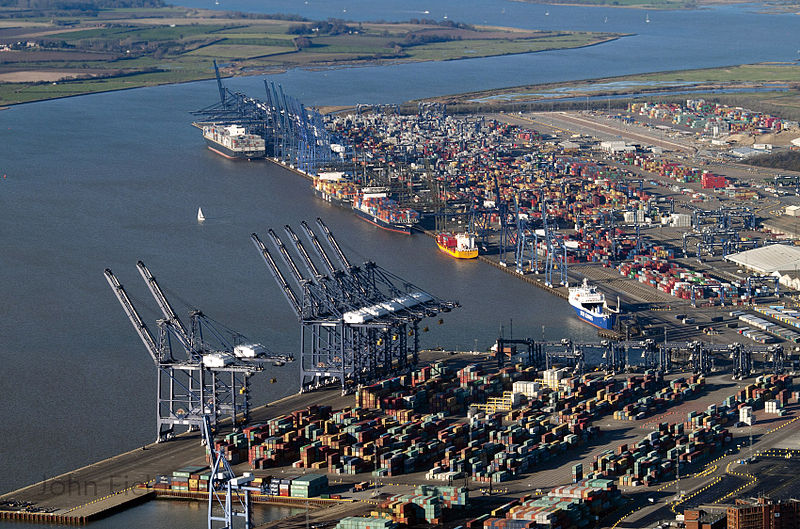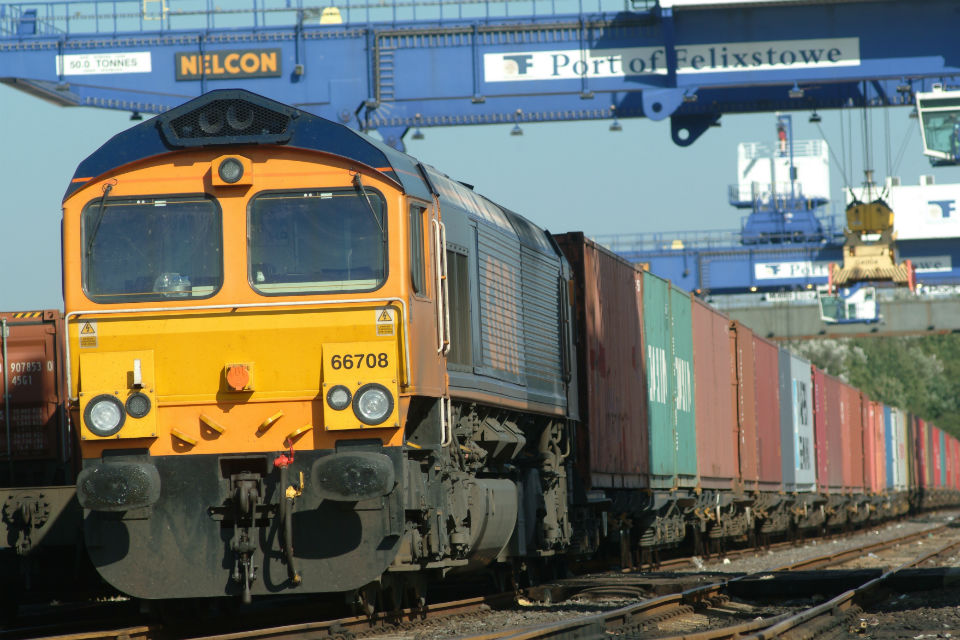The Port of Felixstowe continues to celebrate significant growth in rail market share. The East Coast port has reinforced its position as the UK’s leading intermodal rail facility. It has just come off a record month for rail freight movements. The figures show that there is still an appetite for increasing the rail freight share of containers moved. Development at Felixstowe has been enough to move the whole national measure in maritime intermodal metrics.
The Port of Felixstowe is renowned as the country’s largest container port. It continues to solidify its standing as the UK’s premier intermodal rail hub, too. The port’s world-class scale means movement here impacts the national growth in rail freight operations. Recent data reveals that in week eight of this year, the port achieved a remarkable 33 percent market share for containers moved by rail. That’s the second time already this year that a third of all intermodal traffic has been fulfilled by rail.
Clear commitment from customers and operators
This achievement – or rather the willingness for modal shift – underscores a broader trend of escalating rail volumes at the port. Felixstowe’s own figures show a notable upward trend. The proportion of goods transported inland through the port by rail has seen a steady increase. For 2022 the figure recorded for onward consignment by rail was an impressive 28 per cent. However that rose to 30 per cent in 2023, and that looks like being eclipsed in 2024.

In the face of a faltering economy, the rail freight share growth at Felixstowe is noteworthy. It does signal a clear commitment from customers and operators to seek sustainable transport solutions, even in constrained circumstances. The port – and rail freight operators – are eager to point out that modal shift to rail reduces emissions and alleviate road congestion. The question is how much further can rail freight grow at Felixstowe before running up against the acknowledged capacity constraints on the regional rail network.
Expanding rail transportation options
Among the latest additions to the Port of Felixstowe’s roster of rail services is a new venture operated by GB Railfreight for Maritime Transport, connecting the port with the inland terminal at Birch Coppice in the English Midlands. This recently introduced service marks the fifteenth operated by GB Railfreight from Felixstowe, and the twelfth daily rail connection from the port to Midlands destinations.

Robert Ashton, Operations Director at the Port of Felixstowe, emphasised the significance of expanding rail transportation options. “Increasing the proportion of traffic moving by rail is an important part of our strategy to offer the widest possible range of sustainable transport options through the Port of Felixstowe”, he said.
Twenty-first-century legacy of nineteenth-century vision
Whatever may be the situation beyond the boundary of the vast port, there’s no shortage of shoreside facilities within Felixstowe. Three dedicated rail terminals serve an extensive network of destinations. They included all the major logistics centres: Glasgow, Manchester, Liverpool, and Birmingham among them. The Port’s operators, Hutchison, has stated an ambitious commitment to net zero by 2035. Rail freight plays a part in that, of course, but environmental sustainability is evident throughout its operations. For their part, Hutchison has made significant investments in eco-friendly infrastructure, including 48 battery-powered terminal tractors and 17 zero-emission remote-controlled electric rubber-tyred gantry cranes.
Rail freight development is nothing new at Felixstowe. The legacy of rail can be traced back to the nineteenth century, long before the establishment of the modern-day port. Colonel George Tomline, a visionary landowner, championed the construction of a railway linking Felixstowe to the wider network in 1875. Subsequently, the Felixstowe Railway and Pier Company prioritised the development of rail infrastructure, laying the groundwork for the port’s future evolution. Today, the port’s official name, The Felixstowe Dock and Railway Company, acknowledges that railway heritage.